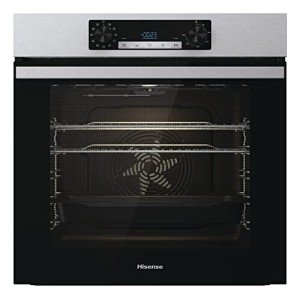A Comprehensive Guide to Buying a Single Oven: What You Need to Know
When it comes to kitchen home appliances, few items are as essential as an oven. Whether you're a devoted baker, a weekend chef, or somebody who simply wishes to heat up leftovers, the right oven can make all the difference in food preparation and cooking. Amongst the various types of ovens available in the market, single ovens stand apart for their versatility and space performance. This article will guide you through the necessary factors to consider when purchasing a single oven, detailing crucial features, types, and answering often asked questions.
Understanding Single Ovens
Single ovens, as the name suggests, consist of one cooking cavity. They are created to manage numerous cooking tasks, consisting of baking, roasting, barbecuing, and broiling. Perfect for compact cooking areas or those who do not require the additional space provided by double ovens, single ovens can be built into cabinets or stand alone.
Types of Single Ovens
Single ovens been available in various types, each offering distinct advantages. Here are the main types to think about:
| Type | Description |
|---|---|
| Conventional | Makes use of leading and bottom heating elements for standard cooking styles. |
| Convection | Utilizes a fan to flow hot air, resulting in even cooking temperature levels. |
| Wall Ovens | Built into the wall for space-saving design while remaining user-friendly. |
| Steam Ovens | Presents steam for wet cooking, exceptional for baking and reheating. |
| Microwave Ovens | Combines cooking and reheating performances with microwave technology. |
Secret Features to Consider
When looking for a single oven, it's important to assess various features that can improve cooking experience and efficiency. Below are some important characteristics to think about:
Size and Capacity:
- Measure the readily available space in your kitchen before picking an oven. Most single ovens range from 24 to 30 inches in width.
- Capacity normally varies from 2.0 to 5.0 cubic feet, depending on just how much you normally prepare or bake.
Energy Efficiency:
- Look for designs with an Energy Star rating to reduce energy intake and lower utility bills.
Oven Types:
- Consider whether you choose a standard or convection model based on your cooking preferences.
Control Panel:
- Choose user-friendly controls, whether they are digital or analog.
- Touch controls often come with advanced functions like programmable settings and timers.
Self-Cleaning Functionality:
- Self-cleaning alternatives save time and effort. Try to find ovens with steam or pyrolytic cleansing choices.
Additional Features:
- Features such as delay start timers, several rack positions, and built-in probes can considerably boost the cooking experience.
Popular Brands
When buying an oven, it is sensible to think about brand names understood for their dependability and quality. Some of the popular brands in the market include:
- Bosch
- Samsung
- LG
- Whirlpool
- Electrolux
- Frigidaire
Actions to Buy a Single Oven
Follow this structured procedure to streamline your purchasing decision:
Determine Your Cooking Needs:
- Assess your cooking habits and how frequently you utilize the oven.
Set a Budget:
- Single ovens can vary considerably in price from a couple of hundred to numerous thousand dollars. Set an affordable budget plan to enhance your options.
Research Online:
- Read evaluates on numerous designs to identify dependability, performance, and functions.
Visit Showrooms:
- Visit device display rooms to see the ovens up close, examine their quality, and comprehend their functions.
Ask for Expert Advice:
- Consult with sales representatives or cooking specialists for recommendations based on your needs.
Compare Warranty Options:
- Look into the service warranty policies. A comprehensive service warranty can supply peace of mind.
Frequently asked questions
1. What is the difference in between a conventional oven and a convection oven?
Traditional ovens use top and bottom heat sources for cooking, while convection ovens utilize a fan to distribute hot air, causing quicker and more even cooking.
2. Can I set up a single oven myself?
While some homeowners choose to install their ovens, it's generally suggested to employ an expert to make sure security and compliance with regional building regulations.
3. How often should I clean my oven?
Frequency depends on usage. A self-cleaning oven can considerably reduce the frequency, while manual cleansing ought to ideally be performed seasonally if used routinely.
4. What additional functions should I look for?
Try to find features such as a timer, hold-up start, and additional cooking modes like air fry or steam for enhanced functionality.
5. Ovens And Hobs than electric ovens?
The choice in between gas and electric depends mainly on personal choice. Gas provides instant heat and is typically favored by professional chefs, while electric ovens generally offer more consistent cooking temperatures.
Purchasing a single oven can raise your cooking experience, leading the way for more pleasurable meal preparation and creativity in the kitchen. As you look for the perfect oven, consider your cooking routines, the oven's features, and your readily available cooking space. Take your time to check out different options, and by following the assistance provided in this post, you can make an educated choice that satisfies both your culinary requirements and spending plan requirements.
In summary, the right single oven will not just improve your cooking effectiveness but likewise make your kitchen a more satisfying space for cooking expedition. Delighted cooking!

